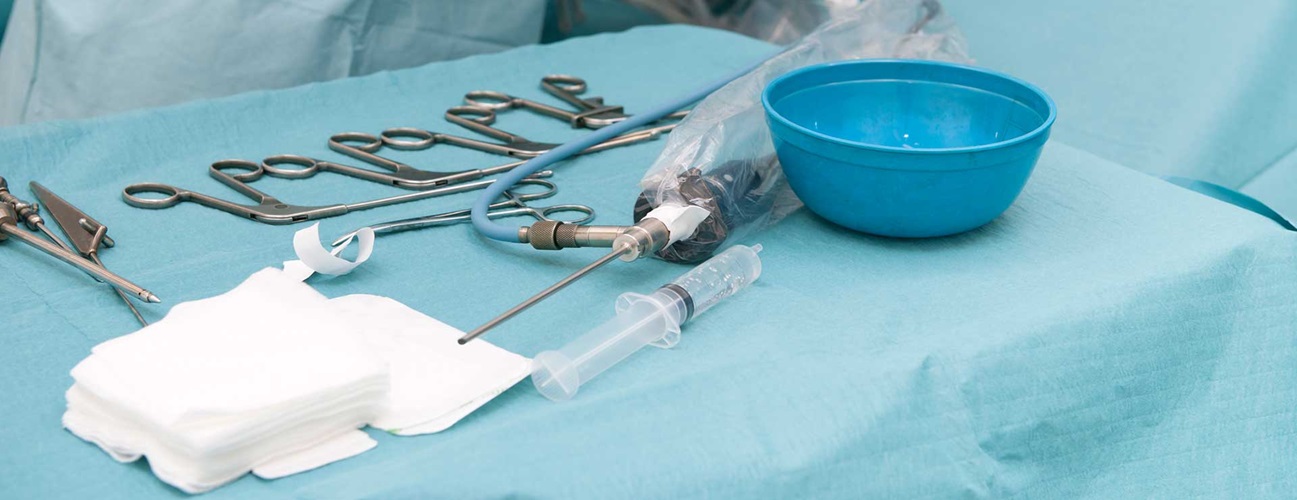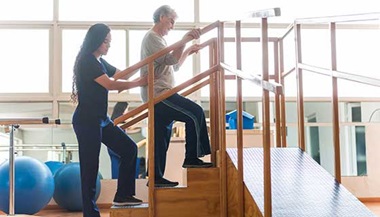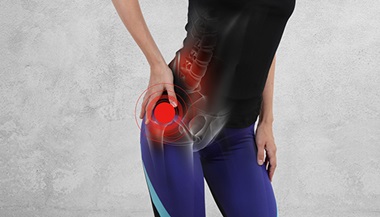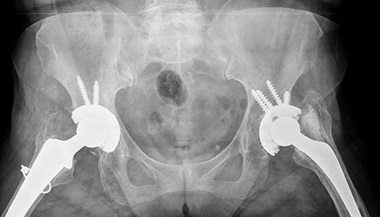Hip Arthroscopy
What You Need to Know
- During hip arthroscopy, a surgeon uses a special device with a small camera to see inside the hip joint to determine the source of your symptoms.
- Hip arthroscopy can be used to clean out loose or damaged tissues from the joint, to repair tears and to reshape the bones.
- You can usually go home the same day after a hip arthroscopy.
- Recovery after a hip arthroscopy can take up to several months depending on which parts of the hip joint were operated on and your recovery goals.
What is hip arthroscopy?
Hip arthroscopy is a minimally invasive same-day (outpatient) surgical procedure that uses a device called an arthroscope to diagnose and treat hip conditions. An arthroscope is a flexible tube with a camera that is connected to a video monitor. An orthopaedic surgeon makes a small incision (cut) close to the hip to insert the arthroscope and direct it toward the joint. The monitor displays a magnified view of the hip joint tissue, allowing the surgeon to see any injuries, damage or other abnormalities in the hip. Hip arthroscopy can be used to explore the cause of hip pain as well as to treat certain hip conditions at the same time. For treatment, the surgeon makes one or two additional cuts to insert special surgical tools.
Hip Arthroscopy | Q&A with Alex Johnson, M.D.
Who is a candidate for hip arthroscopy?
Hip arthroscopy is generally recommended for younger patients with hip pain who do not require a hip replacement. The cause of their pain is usually related to sports injuries to the hip, overuse injuries or abnormalities in the shape of the bones that make up the hip joint. Your doctor might recommend arthroscopy to repair soft tissue damage in the hip or to correct the shape and the fit of the hip bones. Hip arthroscopy is usually not an option for those with osteoarthritis.
Hip arthroscopy may be an option if you’ve been diagnosed with or if your doctor suspects:
- Hip impingement: pinching between the bones of the hip joint due to irregular bone shape. Arthroscopy can be used to reshape the bones.
- Hip labral tear: a tear in the ring of cartilage that rims the hip socket. Arthroscopy can be used to clean out damaged labrum, repair the tear and address underlying causes such as hip impingement.
- Loose fragments of cartilage in the joint after an injury: Arthroscopy can help remove any debris from the hip joint.
- Bone spurs (osteophytes): bony bumps that form on the ends of the bones and can prevent the joint from gliding smoothly. Arthroscopy can be used to shave off the spurs and restore the shape of the joint.
- Synovitis: inflammation of the joint lining. Arthroscopy can be used to remove the inflamed tissue as well as diagnose and treat the underlying causes.
Because these conditions may contribute to the development of hip arthritis over time, treating them with hip arthroscopy can help delay or slow down arthritis, thus postponing the need for hip replacement.
Johns Hopkins Hip Preservation Clinic

Preparing for a Hip Arthroscopy
Your doctor may recommend hip arthroscopy after reviewing your medical history, performing a physical exam and examining findings from the imaging tests (X-ray, CT scan or MRI).
On the day of your procedure, an anesthesiologist will evaluate you to determine the best type of anesthesia. Hip arthroscopies can be performed under general anesthesia (you are asleep during the procedure) or regional anesthesia (you are awake, but your body is numb from the waist down).
Before your procedure begins, the surgeon will attach your leg to a special positioning device. The device features pulling and traction mechanisms to help the surgeon place your leg and hip at the proper angle for surgery. The surgeon will then mark on your skin where the bone, nerves and blood vessels are located, and note where the incisions will be made.
What happens during asthroscopic hip surgery?
- The orthopaedic surgeon makes one or several small incisions to allow the arthroscope and other surgical tools to be inserted.
- Before inserting the arthroscope, the surgeon guides a needle to the hip joint and injects the joint with fluid to create pressure that keeps the joint open and accessible for surgery.
- The surgeon uses the pathway created by the needle to insert a guide wire and then a tube, through which the arthroscope is inserted. This method helps minimize damage to healthy tissues.
- As the arthroscope makes its way inside the hip, an image of the joint and surrounding tissues is displayed on the monitor, allowing the surgeon to identify the problem area.
- The surgeon inserts different arthroscopic tools through other surgical openings to treat the problem.
- Once the issue is addressed, the surgeon closes the incisions using non-dissolvable sutures or surgical tape strips.
- The care team will monitor you in the recovery room as you come out of anesthesia.
- Once you are ready to be discharged, you will be given a pair of crutches to avoid putting too much pressure on the hip that was operated on. You should arrange for someone to drive you home.
Hip Arthroscopy Recovery
Your surgeon may refer you to a physical therapist to help you gradually regain your mobility and strength after the hip arthroscopy. The physical therapist will offer instructions on specific hip stretches and exercises you can do at home. He or she will also provide guidance on when you can stop using crutches and start putting the full weight on your hip. You may need to continue the exercises for six weeks or longer, depending on your level of activity before and after the surgery.
You will have a follow-up appointment with your surgeon to remove sutures, if needed, as well as to discuss your pain levels and overall recovery goals and progress. You may feel hip pain on the side of surgery for a while after the procedure, but it should significantly diminish or disappear in three to six months. Your doctor will prescribe pain medications to help with pain during recovery. If your pain increases or feels like it’s sharp or stabbing, discuss it with your doctor.
You may also feel or hear fluid moving in your joint after the hip arthroscopy. This is normal, and the fluid will be absorbed by your body. With any surgical operation that involves making incisions, you will develop small scars where the incisions were made.
Hip Arthroscopy Risks and Complications
As with most surgeries, hip arthroscopy carries a risk of injury to the nerves, muscles and blood vessels surrounding the surgical site, as well as a risk of infection. These risks are generally lower in minimally invasive procedures such as arthroscopy.
There is always a risk of the procedure not providing the desired symptom relief. If you are still experiencing hip pain after your full recovery, discuss the next steps and other treatment options with your surgeon.







